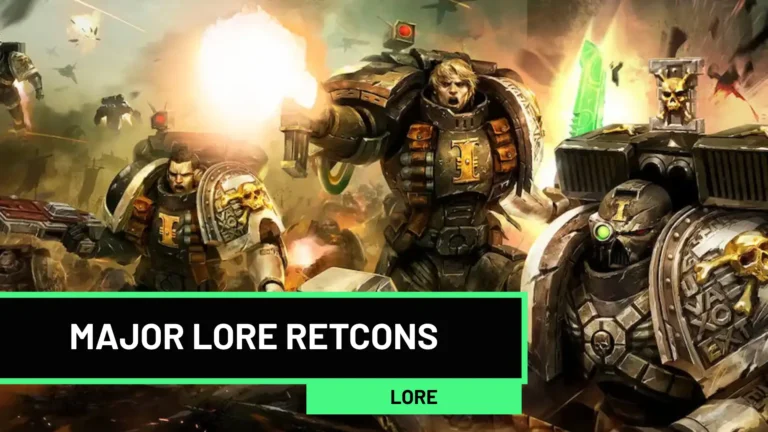Following the recent “wraithbone retcon”, we’ve put together a chronological timeline of major Warhammer 40,000 lore retcons from the earliest editions to the present.
Each entry lists the year of the retcon, what changed, how it contradicted earlier lore, the community’s reaction, and the long-term impact.
List of Notable Retcons
1988 – Introduction of the Horus Heresy (New Backstory for the Emperor’s Fall)
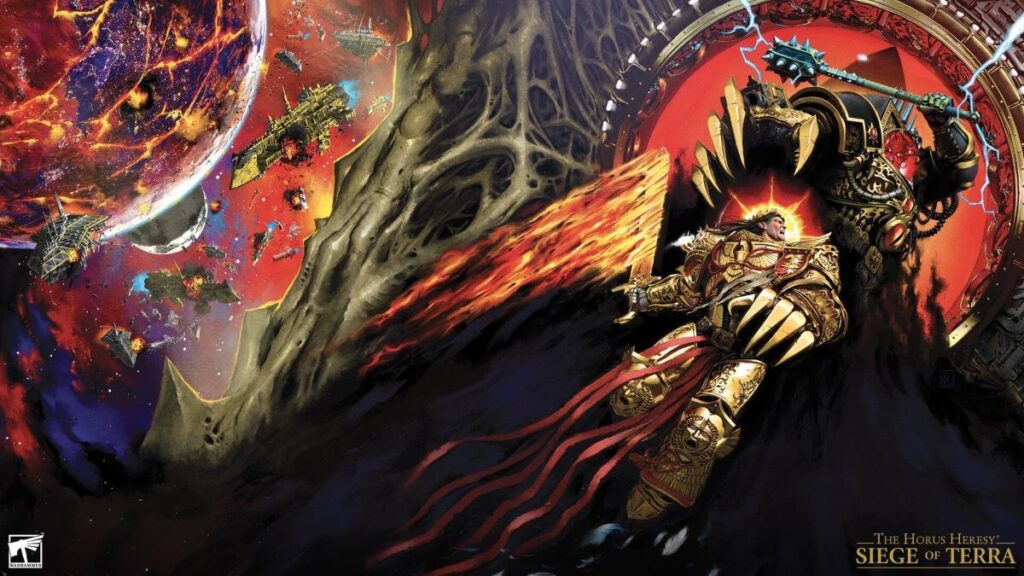
What Changed: Horus Heresy added to lore.
Games Workshop introduced the Horus Heresy – a galaxy-spanning civil war ignited by the Warmaster Horus’s betrayal – as the reason the Emperor was crippled and interred on the Golden Throne. This backstory was first hinted at in Adeptus Titanicus (1988) and fleshed out in Realm of Chaos: Slaves to Darkness (1988).
Contradiction: Original lore had no Horus.
In the 1987 Rogue Trader first edition, the Emperor’s condition was attributed to vague ancient conflicts or simply age; there was no mention of Horus or a Chaos-fueled Space Marine rebellion.
The Heresy storyline retroactively explained the Emperor’s fate as due to a specific event (Horus’s revolt), a significant change from the minimalist original lore.
Community Reaction: Largely positive expansion.
Fans at the time embraced the Horus Heresy as it enriched the universe’s history. It did not invalidate beloved lore (since prior lore was scant on this point) but rather added epic depth. The concept of Space Marine legions, Primarchs, and the great betrayal quickly became a beloved cornerstone of 40K lore.
Long-Term Impact: Core canon established.
The Horus Heresy became central to 40K’s mythology, spawning dedicated rulebooks and the massive Horus Heresy novel series decades later. While many details of the Heresy have been revised or expanded over time, the basic retcon has been fully embraced as canon. This set a precedent that major lore additions could retrofit the backstory if they enhanced the epic narrative.
Early 1990s – Purging of Xenos-friendly Lore (Human–Eldar Offspring Retconned)
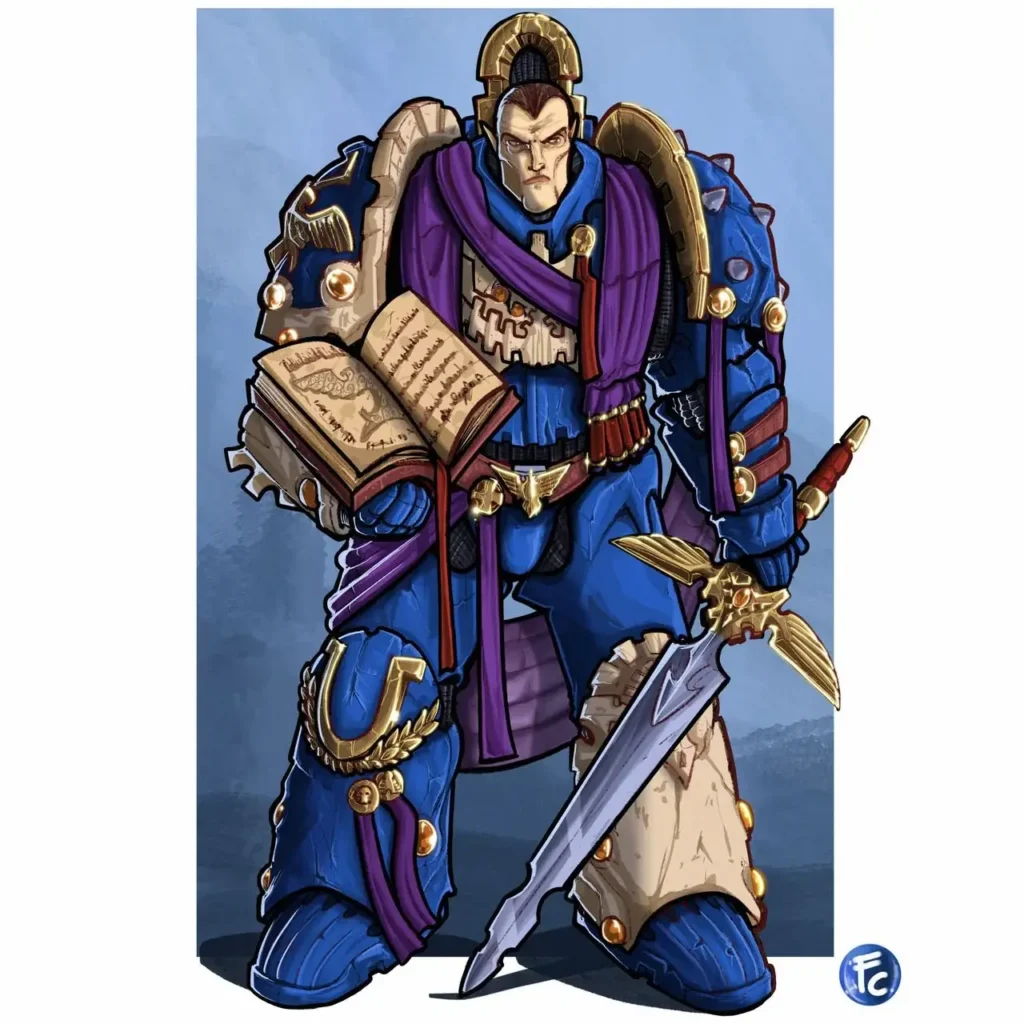
What Changed: Imperium’s xenophobia intensified.
As Warhammer 40K’s tone solidified in the early ’90s (around the 2nd Edition, 1993), Games Workshop removed or retconned lore implying friendly relations or integration with aliens. Notably, a half-Eldar, half-human character, Illiyan Nastase, who had been the Ultramarines’ Chief Librarian in late 1st Edition, vanished from the lore.
Background from Rogue Trader (1st Edition) that portrayed the Imperium as occasionally tolerant – even employing alien psykers – was scrubbed.
Contradiction: Previous lore allowed human-xeno hybrids and cooperation.
In 1st Edition material (e.g. Warhammer 40K Compendium and WD articles), the Imperium could be strangely open-minded: Illiyan Nastase was explicitly a half-Eldar Ultramarine officer, and other humans worked with Eldar. By 2nd Edition, new codices declared it “impossible for Eldar and humans to interbreed,” and the Imperium’s creed shifted to absolute xenophobic purity. The existence of a half-Eldar Space Marine was thus a glaring inconsistency.
Community Reaction: Little outcry, gradual realization.
Because the fanbase was growing and the older lore was less widely known, this retcon did not spark immediate outrage.
Illiyan Nastase and similar lore became obscure footnotes that many second-generation players never heard of. In retrospect, lore aficionados note this change as an early example of GW “cleaning up” the universe’s tone.
Some long-time fans lament the loss of 40K’s weirder, more open-ended early lore, but most accepted the stricter Imperium as fitting the grimdark theme.
Long-Term Impact: Firmly established Imperium dogma.
The retcon of human-xeno camaraderie has stuck – later editions reinforce that Imperial law forbids any xenos mixture or alliance.
Illiyan Nastase was effectively written out of history (later sources installed Chief Librarian Tigurius in that role, dating back before Nastase’s time). This set a pattern: as 40K evolved, GW wasn’t afraid to overwrite early, out-of-character lore to align with the darker, more orthodox vision of the Imperium.
1993–2002 – The Sensei and the Star Child (Emperor’s Immortal Offspring Removed)
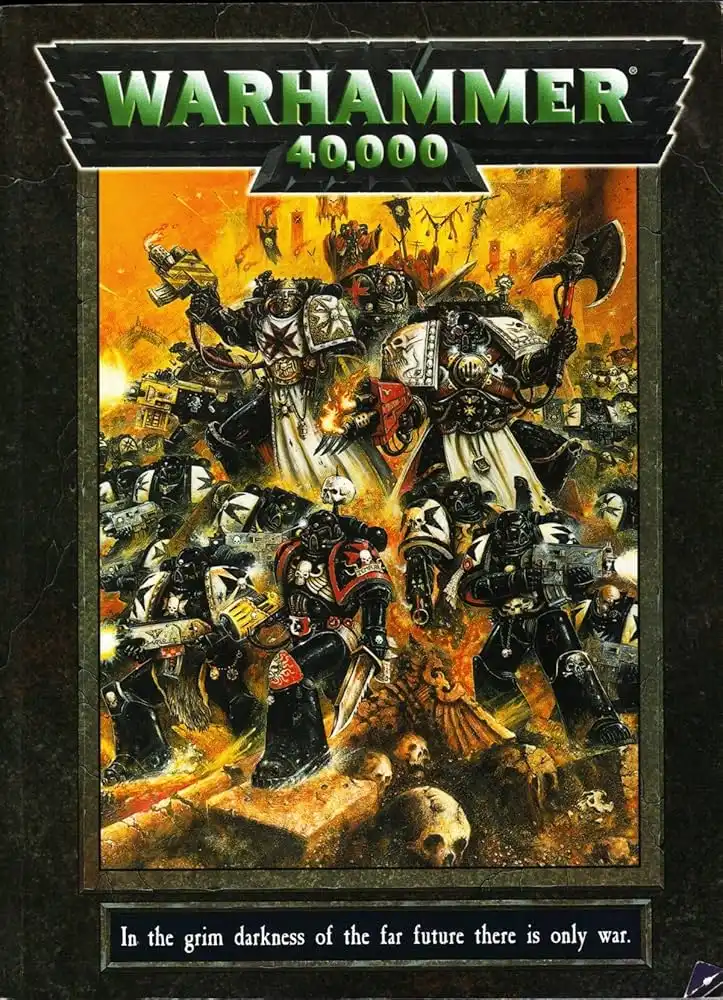
What Changed: Emperor’s “secret immortal sons” dropped from canon.
In 1st Edition’s Realm of Chaos books (1988–1990), lore introduced the Sensei – immortal human sons of the Emperor – and a prophecy that the Emperor’s nascent Warp entity (the Star Child) could be reborn through them.
This radical plotline was quietly abandoned by the 2000s. By the time of 3rd Edition (1998) and certainly in the early 2000s, Games Workshop retconned the Sensei/Star Child storyline out of official canon.
One later source reframed it as an in-universe “heresy” or myth – hinting the Sensei were a Tzeentchian trick – rather than objective truth.
Contradiction: Earlier lore had the Emperor’s sons and reincarnation plot.
According to Realm of Chaos, the Sensei were literally the Emperor’s children living in secret, immune to Chaos, and the Illuminati cult sought to sacrifice them to resurrect the Emperor as the Star Child.
This was a major cosmological idea in 1st Edition. Later Imperial lore made no mention of Sensei; instead it focused on Sensei-like concepts (e.g. Blanks, Perpetuals) in completely different ways. The retcon created a disconnect: what was presented as a universe-shaking truth in early fluff became just a forgotten legend.
Community Reaction: Mixed – from disappointment to relief.
Among veterans who knew the old lore, some were disappointed to see such a wild storyline dropped, as it had given hope for the Emperor’s rebirth. Others (and newer fans) felt the Sensei/Star Child narrative didn’t fit the tone and were happy it faded away.
There wasn’t a single “controversial moment” for this change; instead, fans gradually noticed that new publications ignored or contradicted the Sensei lore. By the 2000s, discussions about the Sensei were mostly confined to lore forums and considered non-canon nostalgia.
Long-Term Impact: Remains out of official lore.
The Sensei and Star Child have not been restored in modern canon – they survive only as a fringe theory referenced obliquely (often debunked in-universe).
This retcon demonstrated GW’s willingness to retire entire storylines that they felt no longer fit, without a dramatic in-universe explanation. It also highlighted the shift toward a more agnostic, mystery-driven lore style: rather than definitive truths like “the Emperor will be reborn,” modern lore leaves such matters ambiguous or treats them as heresy.
1998 – The Squats “Eaten by Tyranids” (Removal of the Space Dwarfs)
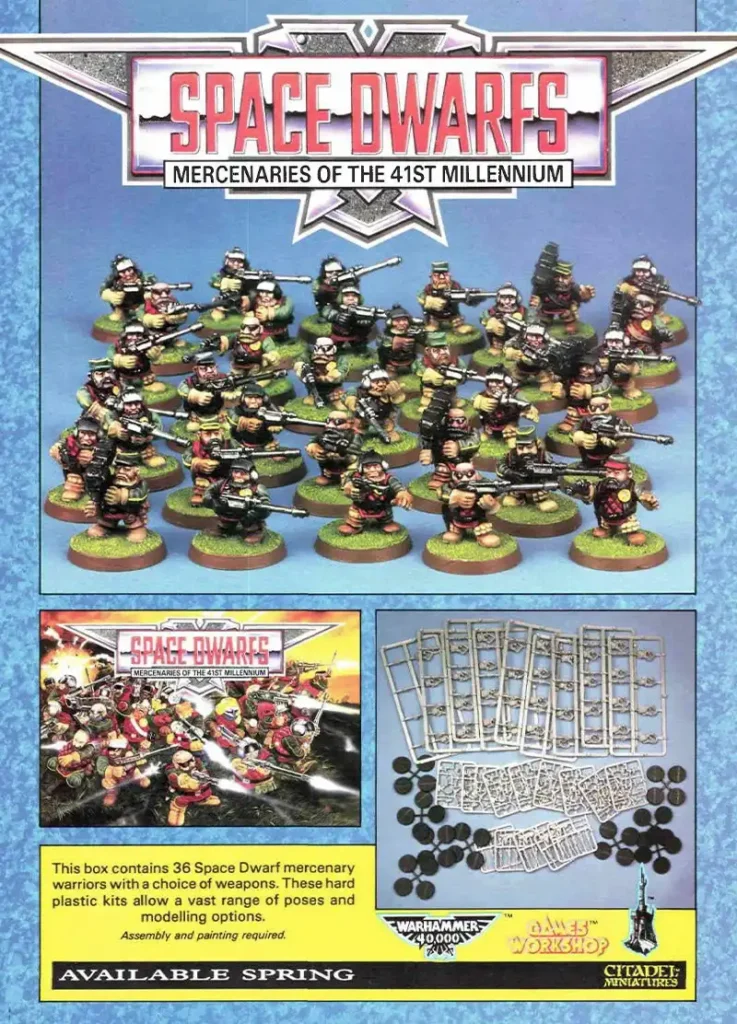
What Changed: The Squat race was written out of the setting.
In the early editions, the Squats (dwarven bikers in space) were a full-fledged faction – present in 1st Edition and with an army list in 2nd Edition. But around the launch of 3rd Edition (1998), Games Workshop dropped the Squats entirely.
They ceased producing Squat rules or models, and the faction vanished from new publications. The unofficial explanation given was that the Squat homeworlds were devoured by a Tyranid hive fleet, eradicating them from the galaxy.
A 2004 statement by designer Jervis Johnson confirmed “we decided that we’d write the Squats out of the background by saying that their Homeworlds had been devoured by a Tyranid Hivefleet.”
Contradiction: Previously a major race, now suddenly gone.
In 1st and 2nd Edition, Squats were recognized as an abhuman branch of humanity, allies of the Imperium. They had lore, units, and mentions in core books. Nothing in those early materials hinted at their extinction.
The retcon via Tyranids was abrupt – a single throwaway line in the lore (and comments from designers) asserted that this entire race had been wiped out, contradicting the expectation that they were still out there fighting alongside the Imperium.
For players who owned Squat armies, this felt like their army’s story had been invalidated overnight.
Community Reaction: Shock, anger, and “Squatted” memes.
The Squat removal became one of 40K’s most infamous controversies of the ’90s. Squat players were understandably upset that their faction was not just unsupported but literally written off as dead. In the broader community, this move introduced the term “getting Squatted,” meaning a faction being axed from lore.
Over time, it became a grim joke – a cautionary tale that no piece of lore was safe from retcon if GW wasn’t happy with it. Many fans, while not personally invested in Squats, criticized GW’s decision and rationale (the designers felt the Squats had become “a joke race” and couldn’t find a way to update them).
However, a few shrugged it off, agreeing that the Squats didn’t fit the setting’s tone at the time.
Long-Term Impact: 20+ years of exile, then a triumphant return.
For decades the Squats remained a sore point and a symbol of controversial retconning. GW occasionally dropped tiny references (e.g. naming “Homo sapiens rotundus” in a 6th edition rulebook, suggesting a few survivors), but effectively they were gone.
Finally, in 2022, GW brought back the Squat concept as the Leagues of Votann – reimagined “space dwarfs” with advanced technology. This revival effectively reversed the old retcon: it established that the Squats (now called Votann) had survived in isolation all along, even contributing to galactic history behind the scenes.
The community response to the return was overwhelmingly positive – a mix of celebratory surprise and tongue-in-cheek “it only took 30 years!” remarks.
While the new Leagues of Votann lore is not identical to the old Squats, the long-term impact is that the “Squatting” of 1998 was ultimately undone, though it remains a legendary example of GW drastically altering lore.
2002 – Ork Origins and the War in Heaven (Snotlings vs. Old Ones)
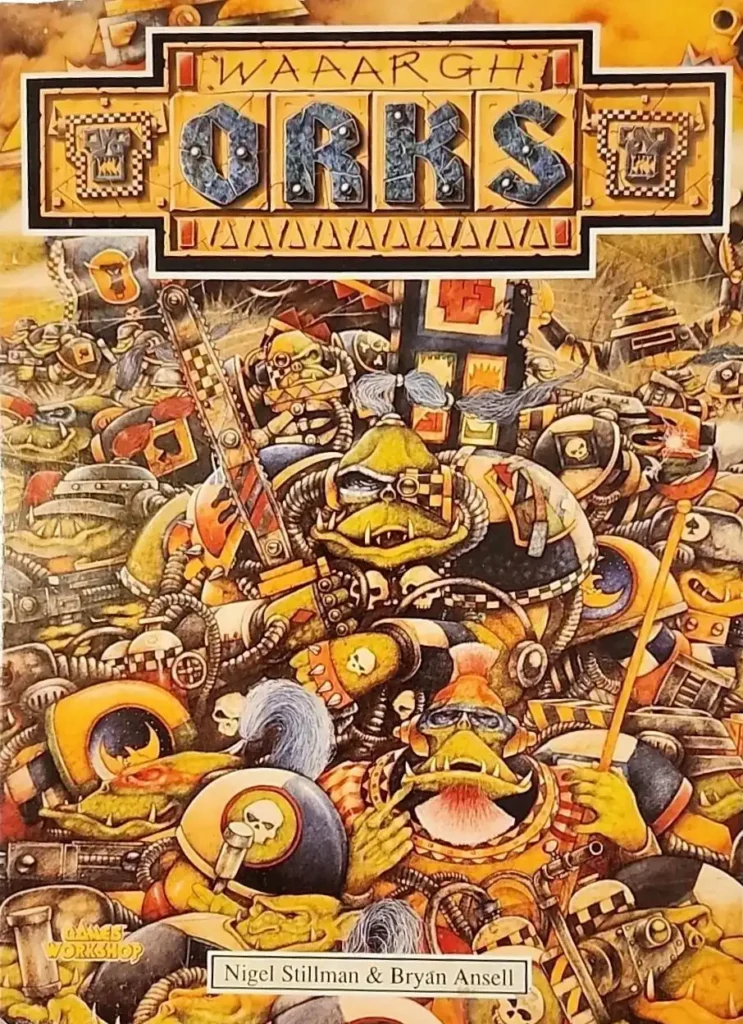
What Changed: Ork origin myth was revised.
Early Ork lore (notably in the 1st Edition books Waaargh! The Orks and ’Ere We Go! in 1990) described the Orks as once ruled by the “Brain Boyz” – a breed of intellectually advanced Snotlings who uplifted Ork society with fungus-derived wisdom.
This quirky myth was effectively retconned in 3rd Edition (late ’90s to early 2000s) when the background of the War in Heaven was introduced. The new lore (seen in the 3rd Edition Necron Codex, 2002) explained that the Orks (as genetically engineered “Krork”) were created by the cosmic Old Ones during the ancient War in Heaven, tying Ork genesis into the setting’s grand mythos.
The Brain Boyz legend was reinterpreted or quietly dropped – later sources imply the “Brain Boyz” were actually the Old Ones or are simply an Ork folktale.
Contradiction: Earlier explanation vs. new cosmic origin.
Previously, Orks believed their gods Gork and Mork had given intellect to little Snotlings (who then lost it), a very local and comical origin story. The retcon positioned Orks in a far more epic context: as deliberate creations in an ancient interstellar war.
This contradicts the tone and scale of the older story. However, because Ork mythology is often unreliable even in-universe, one could argue the Brain Boyz tale was just an Ork perspective. Still, it was a significant shift from a humorous explanation to a serious one involving the Old Ones.
Community Reaction: Low controversy, seen as evolution of lore.
The change in Ork origins did not provoke the level of fan outrage that character or faction removals did. Many players enjoyed the deeper connection to 40K’s galaxy-spanning history.
Ork fans sometimes fondly recall the Brain Boyz story, but most accepted the Old Ones origin as the “real” story behind the Orks with the Brain Boyz being a myth. Some long-time players noted this as an example of GW’s increasingly unified lore, weaving Orks, Eldar, and Necrons into a single creation myth (the War in Heaven) rather than disparate origins.
Overall, the reaction was muted; the retcon was implemented gradually and fit reasonably well, so it avoided major controversy.
Long-Term Impact: Accepted canon (with a nod to the old myth).
Modern 40K lore consistently states that Orks were created by the Old Ones (often referencing them as the Krork). The Brain Boyz/Snotling supremacy story is mostly forgotten, though occasionally the term “Brain Boyz” appears in Ork legends (implying the Orks themselves only dimly understand their origins).
This retcon’s long-term effect was to strengthen the coherence of the setting’s ancient history. It also highlighted GW’s approach of turning earlier whimsical lore into more epic, serious narratives, reflecting the overall maturation of 40K’s tone.
2008 – Alpha Legion’s Secret Loyalties (Twins and the Cabal)
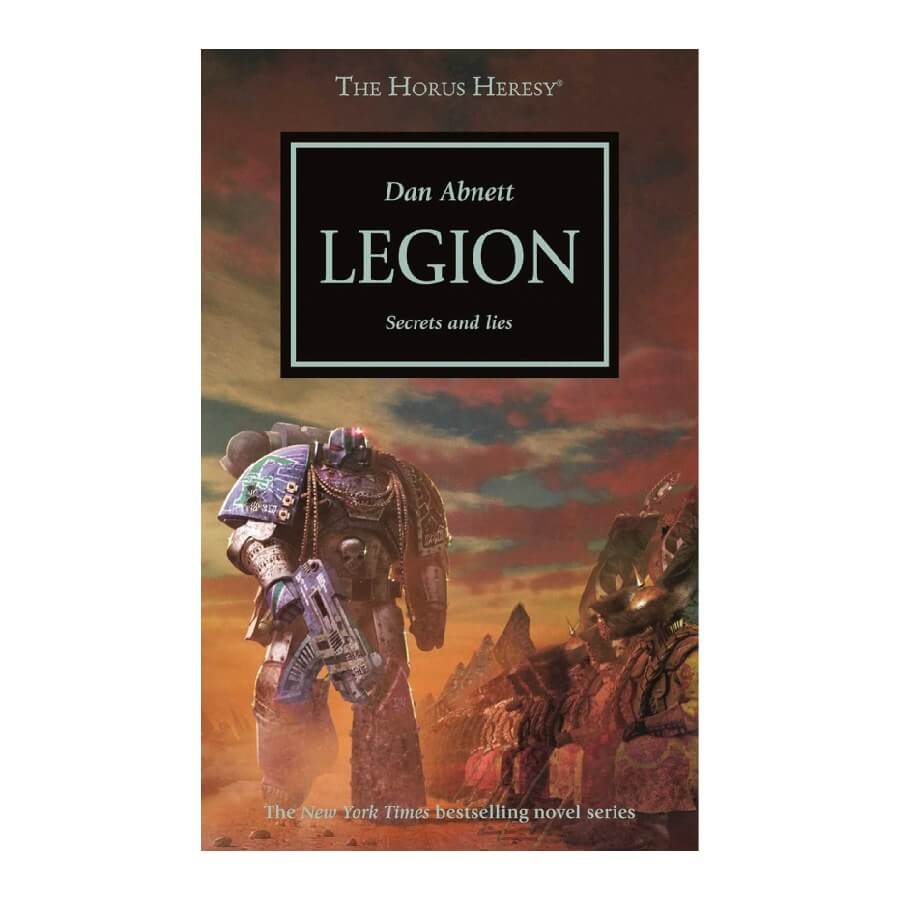
What Changed: Alpha Legion revealed to have a hidden agenda.
The Horus Heresy novel Legion (2008) by Dan Abnett introduced a bombshell twist about the Alpha Legion: its Primarch Alpharius Omegon was actually a pair of identical twin Primarchs, Alpharius and Omegon, and the Legion’s reason for turning traitor was far more complex than previously thought.
In the novel, a Xenos group called the Cabal convinces Alpharius/Omegon that siding with Horus is the only way to ultimately save the galaxy (their theory being that a Horus victory would paradoxically lead to Chaos’s destruction). Thus the Alpha Legion’s Heresy-era actions were reframed as potentially a secret act of loyalty to the greater good of humanity, rather than simple corruption.
Contradiction: Earlier lore painted Alpharius as a straight-up Chaos Traitor.
Prior to this, the Alpha Legion was assumed to have fallen to Chaos like the other Traitor Legions. Early Index Astartes articles and mentions in 3rd/4th edition codices didn’t give a specific reason for Alpharius’s turn, but certainly nothing implied he was secretly loyal.
The twin-Primarch concept was entirely new (none of the original lore from the rulebooks or Index Astartes hinted at two Alphariuses). This novel-based retcon introduced a major reinterpretation of the Legion’s character: from a cunning Chaos legion to an even more mysterious force with divided loyalties.
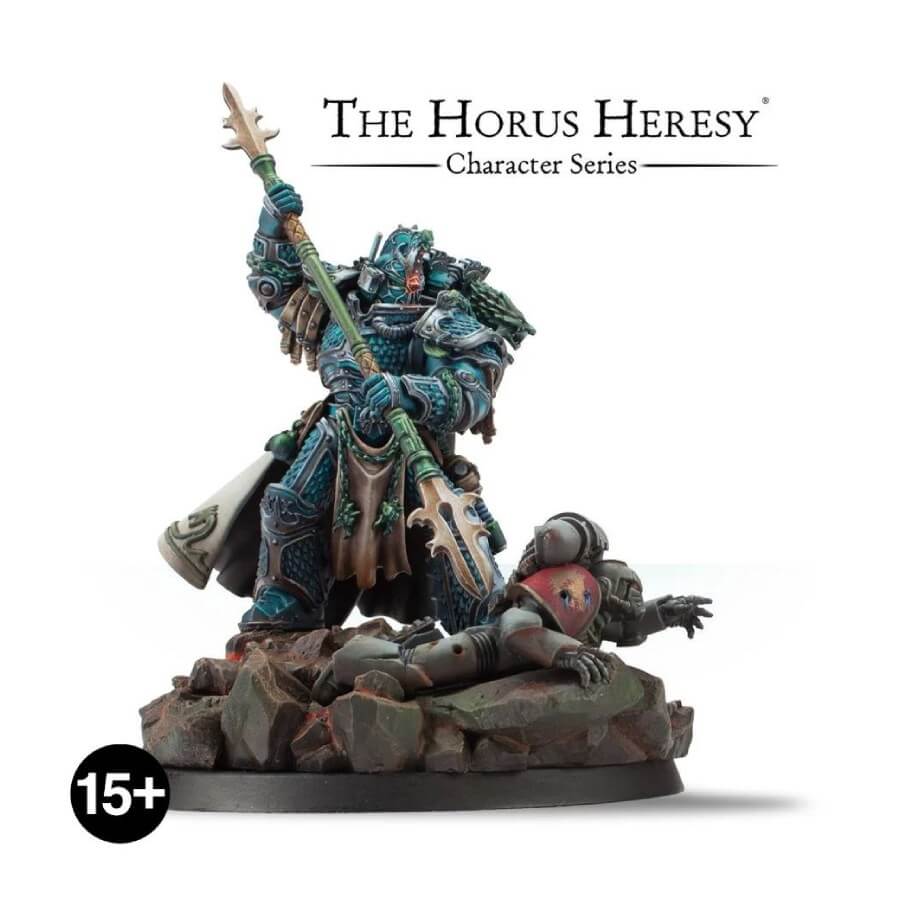
Community Reaction: Debate over “loyalist Alpha Legion.”
The revelations in Legion sparked much discussion. Many readers found the twist compelling – it added depth to a formerly underdeveloped faction and fit the Alpha Legion’s theme of deception. “Alpharius is actually loyal(ish)?” became a popular topic, with some fans excited by the moral grayness introduced, and others uneasy that it diminished the Alpha Legion’s status as true villains.
Some critics felt the Cabal plotline was convoluted or too large a retcon (“two Primarchs all along?!” felt like a retcon without prior setup). Still, because the Alpha Legion had been intentionally enigmatic, the community was relatively open-minded; the novel was well-received, and debates were more about interpretation (are they really loyal or were they duped?) than outrage.
Long-Term Impact: Ambiguity maintained.
This retcon has persisted through the Horus Heresy series and into lore discussions: the question of the Alpha Legion’s ultimate loyalty remains deliberately unresolved.
Games Workshop and Black Library have neither fully confirmed nor denied the Alpha Legion’s true intentions in the current 40K timeline – which is exactly how they seem to want it.
The twin Primarch aspect is now canon, and later sources incorporate it. In the long term, this retcon exemplifies a “lore twist”: it contradicted earlier assumptions but in a way that expanded mystery.
It remains somewhat controversial simply because it’s ambiguous, but it has been largely embraced as part of the Alpha Legion’s identity (i.e. “Hydra Dominatus – you never know the truth”). Importantly, this change came from Black Library fiction, highlighting how novels can significantly reshape lore – a trend that would continue with other retcons.
2011 – Necron Overhaul (From Mindless Machines to Dynastic Lords)
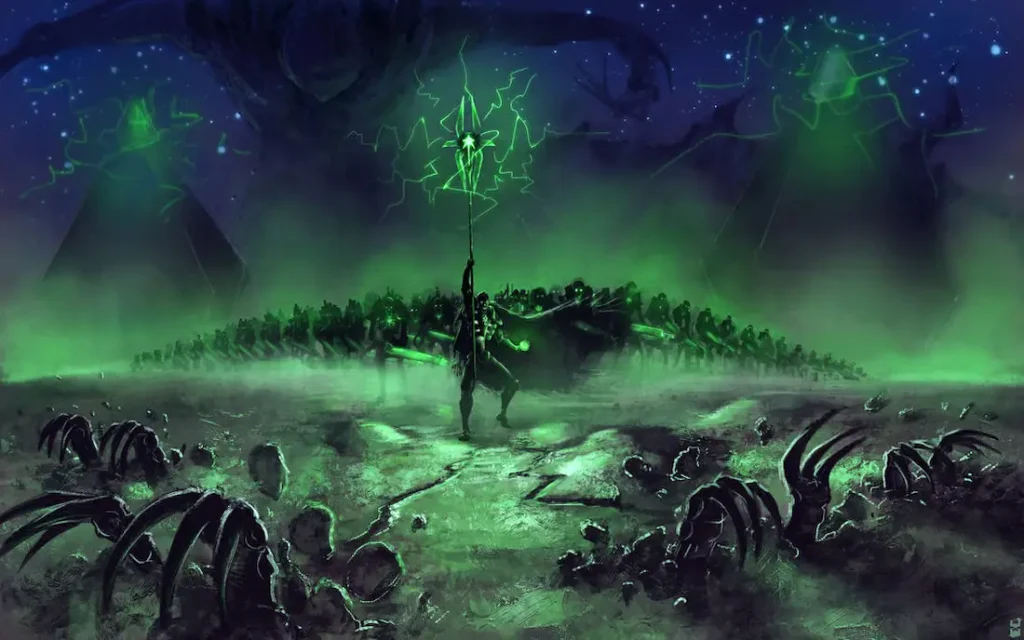
What Changed: Necrons received personalities and a new history.
The 5th Edition Codex: Necrons (2011) fundamentally rewrote the Necron backstory that had been established in their 3rd Edition debut (2002). In the new lore, the Necrons were given individual personalities, dynastic hierarchies, and a tragic history of betraying and shattering their C’tan star gods.
The C’tan themselves were reduced to enslaved shards rather than all-powerful masters. Necron units like Overlords, Crypteks, and named characters (e.g. Imotekh, Trazyn, Orikan) came to the fore, each with distinct motivations.
This was a sharp turn from the previous portrayal of Necrons as nearly mindless robotic servants of godlike C’tan. Essentially, the Necrons went from soulless Terminator-esque automatons to a reawakened empire of tomb kings in space, seeking to reclaim the galaxy.
Contradiction: Original Necron lore (3rd Edition) had them as puppets of the C’tan.
In the 2002 codex, Necrons were characterized by minimal individuality: all Necrontyr had willingly become immortal machines under C’tan’s rule, losing their souls and free will. The C’tan (like the Nightbringer and Deceiver) were the chief villains, and the Necron warriors and lords were extensions of these star gods’ will.
When Necrons awoke in M41, they carried out simple directives: harvest life, etc., often under direct control of a C’tan. The 2011 retcon flipped this: now the Necron nobility had overthrown the C’tan and retained enough of their minds to scheme, parley, and even possess quirks (such as Trazyn’s collection habit).
This directly contradicted prior source material, essentially replacing the Necrons’ entire lore foundation.
Community Reaction: Highly debated and polarizing.
The Necron overhaul in 2011 sparked extensive community debate. Some players loved the change – the Necrons now had rich characters and stories, which made them more interesting as a faction.
The inclusion of Necron personalities (and novels like The Infinite and The Divine) won over many fans, showcasing what the new lore could offer. However, purists who adored the original Necrons’ terrifying, unknowable nature were disappointed.
They felt the cosmic horror element was lost – the 3rd Ed Necrons were akin to unstoppable forces of death, whereas 5th Ed introduced political squabbling among Necron nobles. Critically, some accused GW of “Tomb King-ifying” the Necrons (making them too much like Warhammer Fantasy’s Tomb Kings in space).
Online forums saw arguments for years about which lore was superior. It was one of the first big new Codex-driven retcons that really divided the fanbase.
Long-Term Impact: New lore largely embraced (old lore mostly discarded).
Over a decade later, the 5th Edition Necron lore has stuck. Subsequent codices and Black Library novels have built on it, and characters like Trazyn the Infinite and Szarekh the Silent King are now fan-favorites – figures impossible under the old lore.
The depth added to Necron culture has been capitalized on in campaigns and stories, indicating GW’s commitment to the change. The initial controversy has cooled; many newer players only know the post-2011 Necrons, while some veterans have come around to appreciating the new incarnation.
Still, the dramatic reversal of the Necrons’ nature remains a textbook example of a major retcon, often cited when fans worry how future codices might rewrite lore. It also set a pattern: Games Workshop showed it would significantly alter lore to facilitate more narrative possibilities (and, cynically, to make a faction more compelling to sell).
Despite early criticism, this retcon has endured and enriched 40K’s storytelling, though a segment of fans will always miss the old relentless, soulless Necrons.
2016 – Deathwatch Founding Revised (Origins Moved Back in Time)
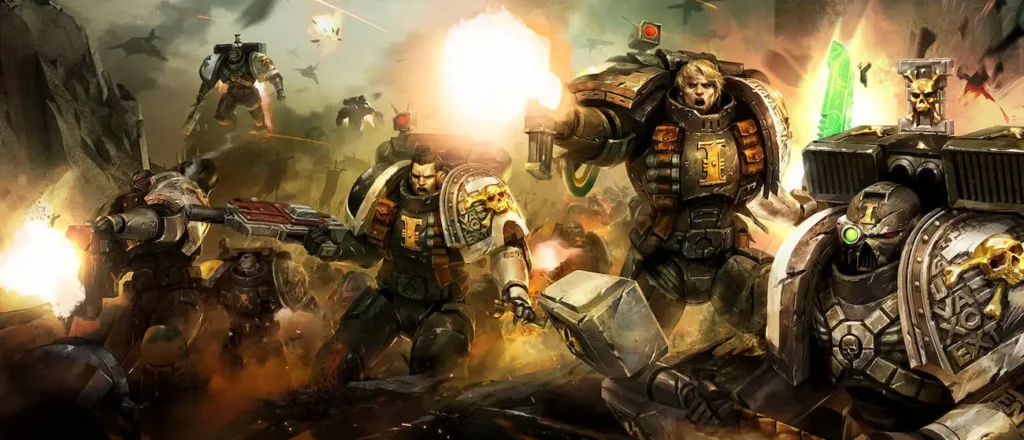
What Changed: The Deathwatch’s creation was retconned to an earlier era.
Originally, the Deathwatch – the elite Xenos-hunting Space Marine teams – were said to have formed during the Apocryphon Conclave of Orphite IV (a secret Inquisitorial gathering) in the 41st Millennium.
This lore came from sources like the 3rd Edition rulebook and the Inquisitor game (early 2000s), which described Inquisitor Lords and Chapter Masters agreeing to create the Deathwatch as a joint endeavor of the Ordo Xenos and Astartes chapters.
In 2016, Black Library’s The Beast Arises novel series rewrote this history. It depicted the Deathwatch being founded much earlier – in M32, during the War of the Beast (a massive Ork invasion).
In this version, the Imperial Fists Chapter Master (Koorland) and the Inquisition form the Deathwatch out of necessity to combat The Beast, and an Imperial Fist veteran becomes the first Deathwatch commander.
The new 8th Edition Deathwatch codex (2018) adopted this retcon, placing the Deathwatch’s origins in the 32nd Millennium.
Contradiction: Previous lore placed Deathwatch in modern times, not Heresy era.
The older account had the Deathwatch created “centuries ago” but still within the timeframe of the 41st millennium’s struggles – long after the Heresy. The sudden shift to say it actually began right after the Heresy, in the aftermath of an Ork war 1,500 years post-Heresy, directly contradicts the established timeline.
It also means prior references (like an Apocryphon Conclave in M41) are either invalid or must be interpreted as a “refounding” or simply a later organizational meeting. Essentially, the who and when of the Deathwatch’s birth changed: from an Inquisitor-driven 41st mil. initiative to a Space Marine-driven 32nd mil. initiative.
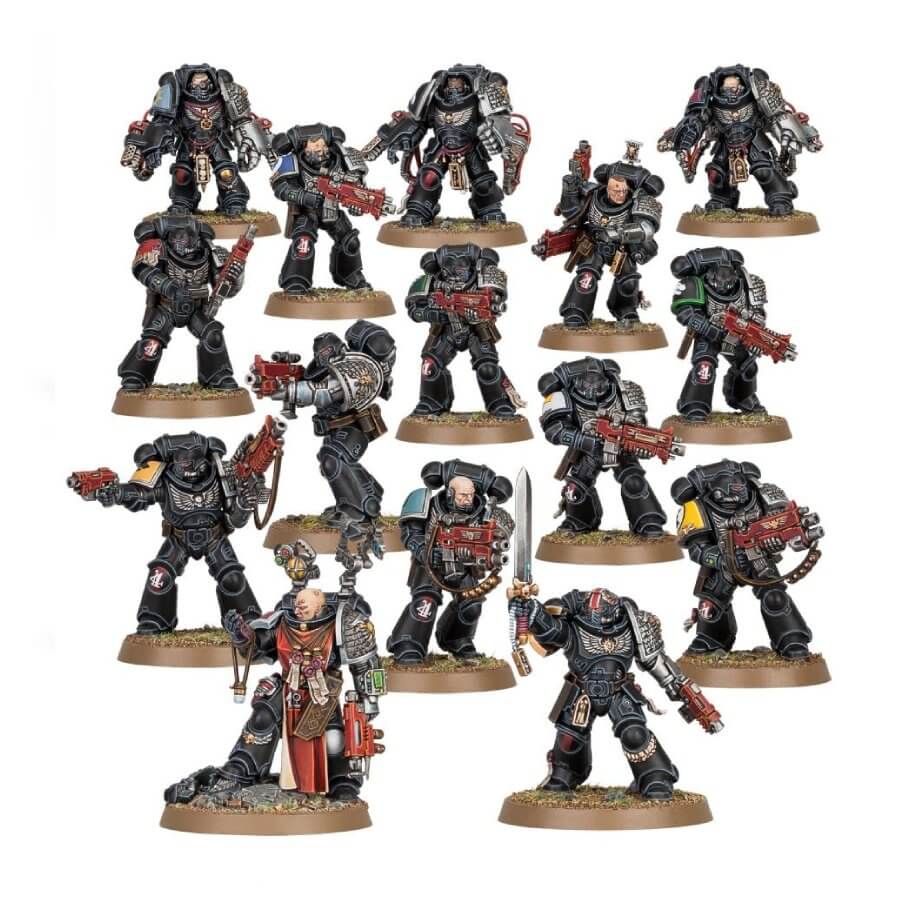
Community Reaction: Notable among lore buffs, but moderate concern.
This retcon was noticed mainly by devoted lore fans and RPG players (the Deathwatch had been featured in the Deathwatch RPG with the old origin story).
Some criticized it as an unnecessary change, possibly driven by the desire to tie the Deathwatch into the popular Beast Arises storyline or to give them a longer legacy.
A few were annoyed that years of assuming the Apocryphon Conclave story were “true” turned out to be false. However, the Deathwatch concept itself didn’t fundamentally change – only the historical timing – so many casual fans were unfazed.
Additionally, because this lore change coincided with the first standalone Deathwatch tabletop releases (the Deathwatch Overkill game and 7th ed Codex: Deathwatch in 2016), some saw it as GW simply fleshing out the faction’s background rather than an egregious retcon.
Long-Term Impact: New origin accepted, old lore footnoted.
Current official publications all use the retconned history: the Deathwatch was born in the War of the Beast. Lexicanum and source guides note the two conflicting origins, but in-universe this isn’t presented as a mystery – it’s more that GW overwrote the old info.
The Deathwatch continues to operate as before; the change mainly gave them a heroic origin story tied to a big historical event. Long-term, this retcon is an example of Black Library-driven lore changes filtering into the codices.
It shows GW’s willingness to adjust timelines (often to earlier dates, giving factions a longer history) and how those changes, while debated, tend to stick if they add flavor. The older Apocryphon Conclave story is now treated as apocryphal, and fan debate on this has largely settled, with most rolling with the new narrative.
2017 – Abaddon’s Black Crusades: Failures to Master Plan
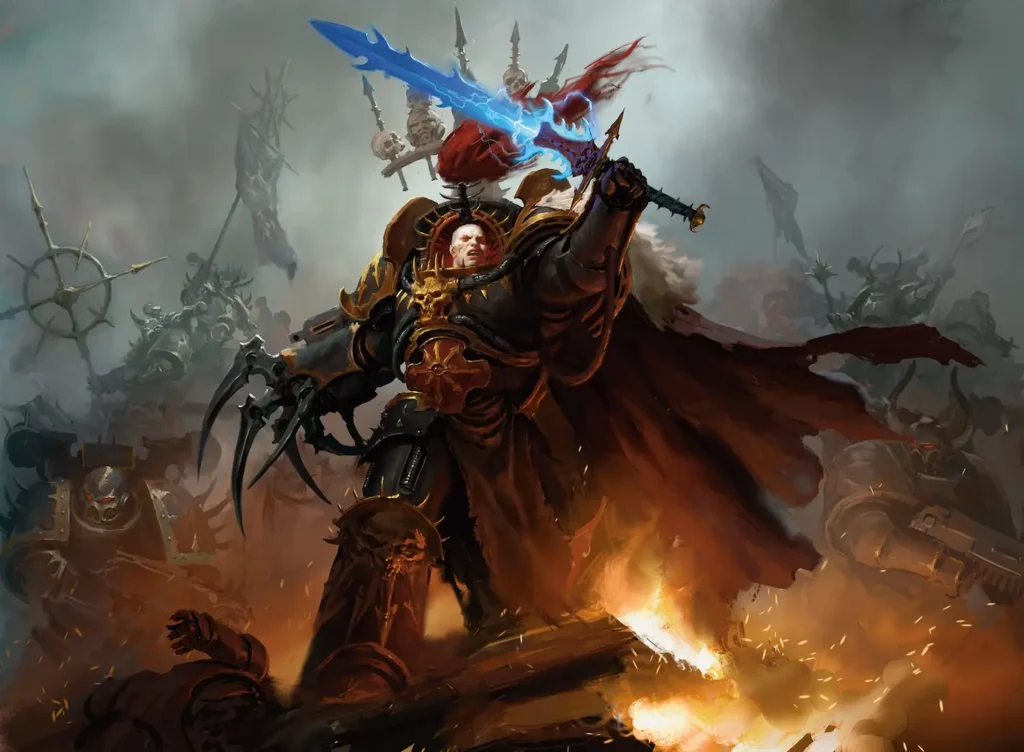
What Changed: All of Abaddon’s past failures were retconned as intentional successes.
For decades, Abaddon the Despoiler’s thirteen Black Crusades were portrayed as largely failed invasions – each a massive assault from the Eye of Terror that the Imperium ultimately repelled (often barely).
The 13th Black Crusade (the 2003 global campaign) was the most recent, ending with Abaddon seemingly defeated at Cadia (though with heavy Imperial losses). In 2017, with the advent of 8th Edition’s new storyline, Games Workshop reframed all of Abaddon’s Black Crusades.
They revealed that Abaddon had a grand plan called the “Crimson Path”: every Crusade had a hidden objective that he achieved, gradually weakening the Imperium and the veil between reality and Warp. Thus, none of his Crusades were true failures – they all set up the ultimate triumph in the 13th.
The retcon culminated in the Gathering Storm campaign and 8th Ed lore where the 13th Crusade (now called the “13th Black Crusade: The Fall of Cadia”) succeeds in destroying Cadia and opening the Great Rift. In short, Abaddon went from a notorious loser to a master strategist whose every move was part of a millennia-long victory.
Contradiction: Previously, Abaddon was a repeated failure (in Imperial records and older codices).
Older codices (2nd Ed Chaos Codex, the 13th Black Crusade supplement, etc.) explicitly noted that Abaddon had been thrown back twelve times. He was often compared unfavorably to Horus – a meme in the community called him “Failbaddon.”
The sudden narrative that “actually, he meant to lose those battles” or that each retreat was part of the plan contradicts the tone of all those sources where the Imperium claimed genuine victory.
It also retroactively changes the outcome of the 13th Crusade global campaign: in 2003’s official result, Chaos was stopped short of total victory, but now the lore says Abaddon’s true goals (destroying Cadia’s pylons to tear the Eye of Terror open) were achieved, and that the prior Imperial “victory” was just fighting a vanguard. This was a major rewrite of 40K’s contemporary history.
Community Reaction: Mixed – appreciation for a formidable villain vs. frustration at revisionism.
This retcon drew a lot of commentary. On one hand, many fans (and Black Library authors) had long felt Abaddon was treated too much like a Saturday morning cartoon villain who fails and vows “I’ll get you next time!”
The retcon addressed that, giving Abaddon far more credibility. These fans applauded making the Despoiler a serious threat at last, feeling it was necessary for the new epoch of 40K (the Dark Imperium era).
On the other hand, some veteran players were unhappy that their past narratives and victories were essentially invalidated. The Eye of Terror campaign, which many had participated in, was basically declared null – an official GW retcon of an outcome that players had invested in.
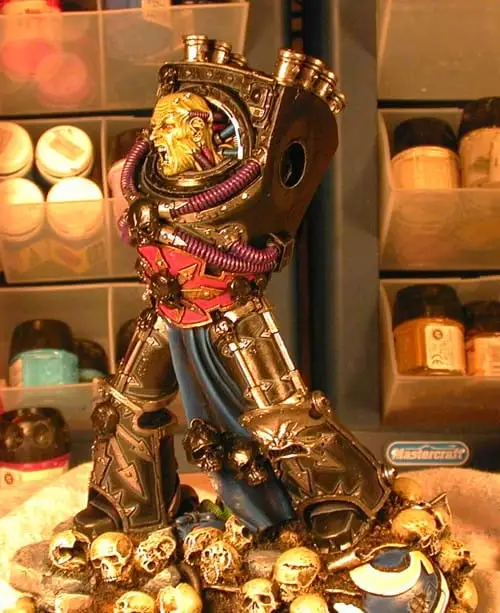
Some called it blatant narrative convenience to elevate Abaddon. Memes also shifted – from “Failbaddon” to joking that GW was “gaslighting the fans” into forgetting Abaddon ever lost. There was debate in forums about whether this was clever storytelling or clumsy retconning.
Long-Term Impact: New status quo: Abaddon the Undisputed Arch-Villain.
The retcon has held and shaped the current storyline: Abaddon succeeded in wrecking Cadia and triggering the Great Rift, plunging the galaxy into the “Era Indomitus.”
He is now seen in lore and by fans as the major antagonist of 40K’s present, finally fulfilling the promise of being Horus’s heir in threat level. The Imperium’s past “wins” against him are recontextualized (e.g. those Black Crusades were ploys to acquire artifacts, destroy pylons, etc.).
While some grumbles remain, most of the community has rolled with it, and newer fans only know Abaddon as the dangerously competent warlord he is now. This episode highlights a pattern in GW’s approach: they were willing to rewrite recent lore in a sweeping way to facilitate a new narrative direction (the introduction of the Great Rift and a more dire setting).
It also underscored that community-driven outcomes (like campaign results) might be overturned later – a sore point for some, but part of how GW steers the overall story.
2017 – The Primaris Space Marines “Always Existed” (Secret Project Retcon)
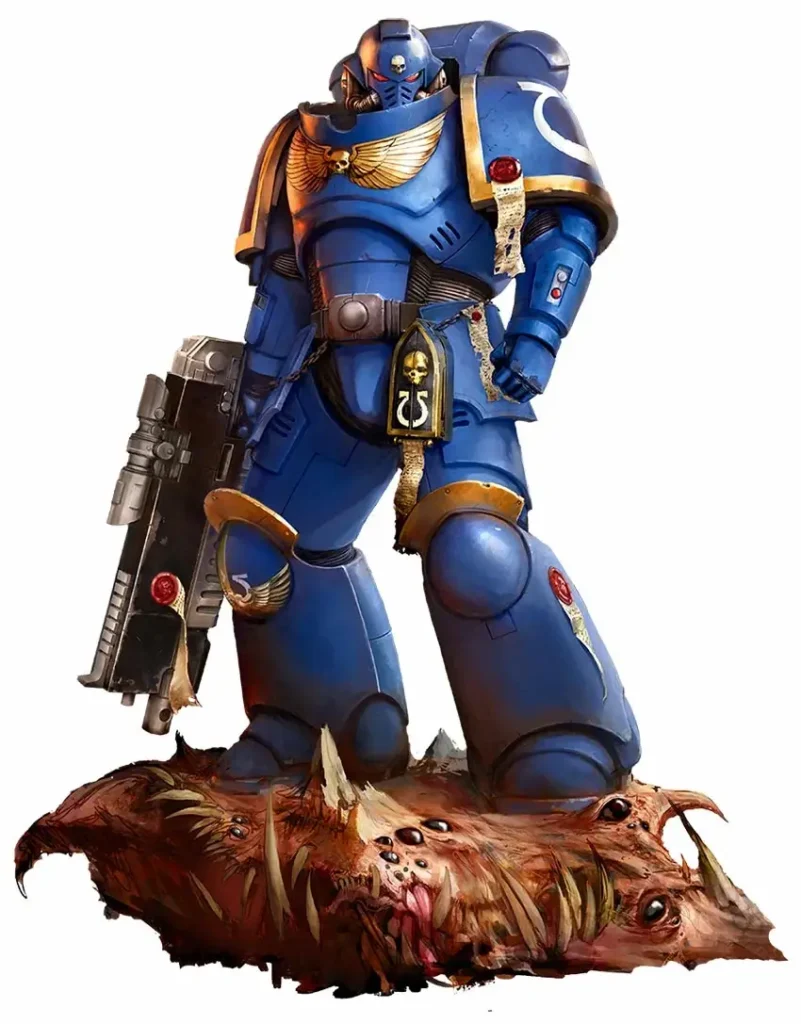
What Changed: Introduction of Primaris Marines with a retroactive backstory.
In the 8th Edition kickoff (2017), Games Workshop unveiled the Primaris Space Marines – newer, taller, gene-enhanced Space Marines – as a major addition to the setting. The lore accompanying this release was that Archmagos Belisarius Cawl, on Guilliman’s orders, had begun the “Primaris Project” 10,000 years earlier, during the Horus Heresy’s aftermath.
Cawl spent millennia creating improved Astartes in secret, so that by the time Guilliman was revived in M41, he could unleash these Primaris warriors to reinforce the Imperium. This meant that in canon, Primaris Marines (and their new organs and weapons) had been in development all along, even though they were never mentioned before.
Guilliman then rolled them out in the Indomitus Crusade. Essentially, GW introduced a huge new element to the universe and simultaneously retconned the lore to say “they were there behind the scenes the whole time.”
Contradiction: Three decades of lore with no hint of such a project.
Prior to 2017, the extensive lore on Space Marines – their creation, the Adeptus Mechanicus, Guilliman’s actions post-Heresy – contained zero reference to any secret second breed of Marines.
In fact, many sources implied the Emperor’s original genetic work was singular and that after the Heresy, no significant advancements (certainly not new Primarch-derived organs) were made. The sudden claim that Roboute Guilliman commissioned Cawl to improve on the Emperor’s design (during the Heresy, no less) and that tens of thousands of Primaris were ready in stasis by the 41st millennium was a huge retcon.
It stretched plausibility for some fans, given that famous tech-priests like Cawl had never been noted to be doing this in the background.
This retcon had to bend continuity (e.g. explaining why none were used in critical moments prior to Guilliman’s return) and overwrite the assumed technological stagnation of the Imperium. It was clearly motivated by the real-world desire to introduce new models, and many fans recognized that.
Community Reaction: Significant discussion, skepticism, and gradual acceptance.
The debut of Primaris Marines was controversial on multiple fronts (rules, model scale, etc.), but from a lore perspective, reactions ranged from intrigue to cynicism.
Some fans were excited by the fresh infusion to the story and felt the retcon was justified – after all, the Imperium hoards secrets, so maybe it wasn’t impossible that Cawl had this project hidden.
The addition of Primaris allowed the storyline to advance (with Guilliman’s return and a stronger Imperium), which some saw positively. However, a loud segment of the community criticized the lore as an overt retcon to sell new toys.
Common gripes included: “If Cawl had these super-Marines, why didn’t he deploy them when Cadia was falling or during the countless disasters of the last 10,000 years?” and “This undermines the original Space Marines (now called ‘Firstborn’) as obsolete.”
The term “Cawlfuckery” popped up, joking about Cawl magically solving problems off-screen. That said, over time, the idea of Primaris Marines became normalized, especially as Black Library books and Codex fluff worked to integrate them. The community debates cooled, though some veteran players still harbor resentment about the clumsy narrative justification.
Long-Term Impact: Primaris are now an integral part of 40K, though the retcon lingers.
By the current edition, Primaris Space Marines feature in nearly all Space Marine chapters and fiction. The lore has doubled down that they were indeed part of Guilliman’s contingency plan and are here to stay, effectively supplanting the older Marines.
The initial retcon stands as an example of GW making a sweeping lore change explicitly tied to a product launch. It remains a bit of a scar for those who prefer the older image of Space Marines, but the new generation of fans (and even many older ones) have embraced the Primaris storyline.
Importantly, GW has used ongoing narratives to address some fan criticisms (for example, showing that Guilliman was initially distrustful of the Primaris project himself, and having some Primaris marines question their place, etc., adding nuance to the story).
In sum, the Primaris introduction demonstrates GW’s approach of “backfill retconning” – inserting a big change and then working backwards to make it seem like it was always part of the lore. Controversial at first, this approach has largely succeeded in universe-building, but it’s remembered as a case where the motives were very transparent.
2020 – The Indomitus Timeline Rollback (Dark Imperium Date Change)
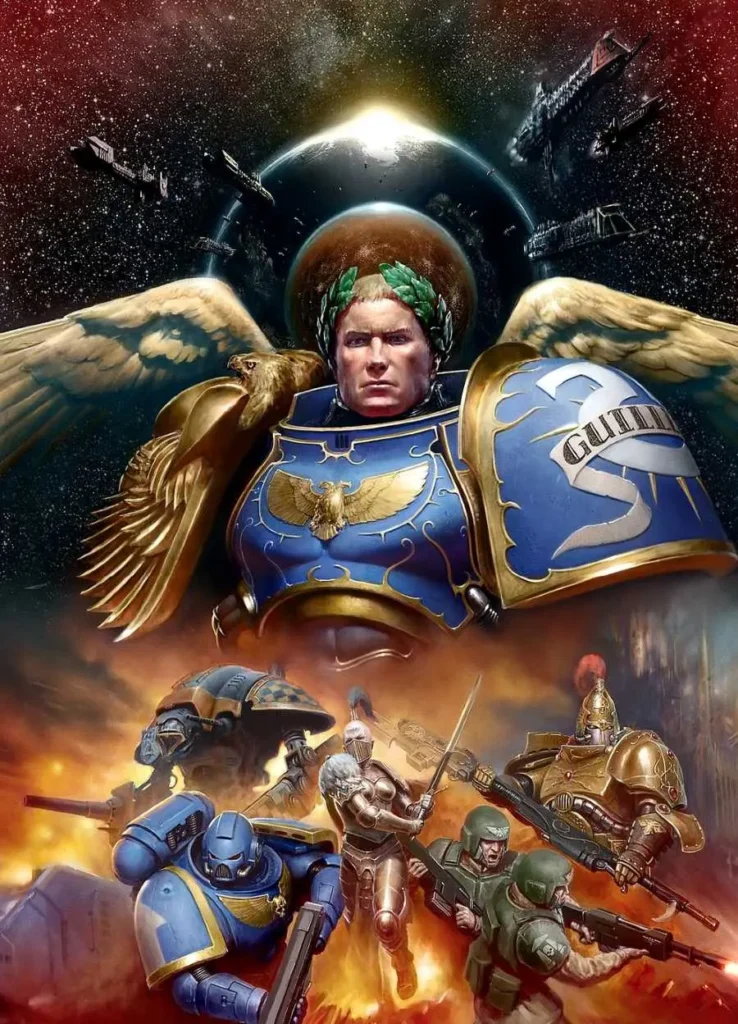
What Changed: Advancing the storyline, then partially undoing the advance.
When 8th Edition launched in 2017, the setting jumped forward to ~120 years after the creation of the Great Rift. The novel Dark Imperium was set in ++ years post-rift and depicted the end of the Indomitus Crusade.
However, as 9th Edition (2020) approached, GW decided to retcon the timeline: they rolled the current date back so that only ~12 years had passed since the Great Rift, not 100+. In the revised lore, the Indomitus Crusade was still ongoing (now divided into phases, with the first phase ending at year 12), and events that had been described as decades past were now recent.
This was an unusual retcon in that it altered the passage of time in the narrative. GW went so far as to edit and re-release the novel Dark Imperium with adjusted dates to fit the new timeline.
Contradiction: Original 8th ed lore established a longer time gap.
All the initial 8th Ed codices and novels like Plague War operated under the assumption that over a century had passed since Guilliman’s return – giving breathing room for new developments (e.g. new generations of Primaris, etc.).
The decision to compress this to just a dozen years contradicts those publications and required retconning published material (literally rewriting parts of novels). It confused the chronology: for example, characters who were said to have done things “over a century ago” would now have done them only years ago.
Fans who followed the lore had to adjust their understanding that “actually, not that much time has passed”. Essentially, GW advanced the storyline and then reversed part of that advancement, which is a form of self-contradiction within a few years.
Community Reaction: Confusion and criticism among lore enthusiasts.
This move was met with some head-scratching and frustration, especially from readers of the novels. It was relatively unprecedented for GW to reissue novels with changed lore, so it was clear they were making a concerted retcon.
Some fans felt this was sloppy or indicated a lack of planning – why jump 100+ years forward only to backtrack? The prevailing theory was that GW realized they had pushed the timeline too far for comfort and that it impeded storytelling (e.g. beloved characters would be long dead, etc.), so they walked it back.
While there wasn’t broad “outrage” (this was a somewhat esoteric timeline detail), those deeply into the lore debated the necessity of the change.
A DakkaDakka forum thread in late 2020 discussed how “GW just retconned 8th edition’s timeline”, with reactions ranging from “Oh, I guess they want the Crusade to be ongoing” to “This is irritating, they’re rewriting recent history”.
Long-Term Impact: The narrative is now set in the 12-years-post-Rift era.
Going into 9th and 10th Edition, all lore abides by the compressed timeline (Circa 112.M42 instead of 200.M42). The Indomitus Crusade’s later phases are unfolding “now” in the setting, allowing current stories to have Guilliman and other big names actively involved. The retcon largely achieved its aim: it keeps the sense of immediacy and ongoing crisis in the narrative.
Over the long term, this is a relatively minor retcon (no characters or factions changed, just dates), so it hasn’t remained particularly controversial except as a curious decision. It does, however, highlight GW’s willingness to adjust the timeline for narrative convenience, even if it means contradicting material printed a few years prior.
It also was a case of a “soft retcon” implemented via updated printings rather than big lore announcements, reflecting a pattern of quietly fixing lore to suit current needs.
2022 – The Return of the Squats (Leagues of Votann)
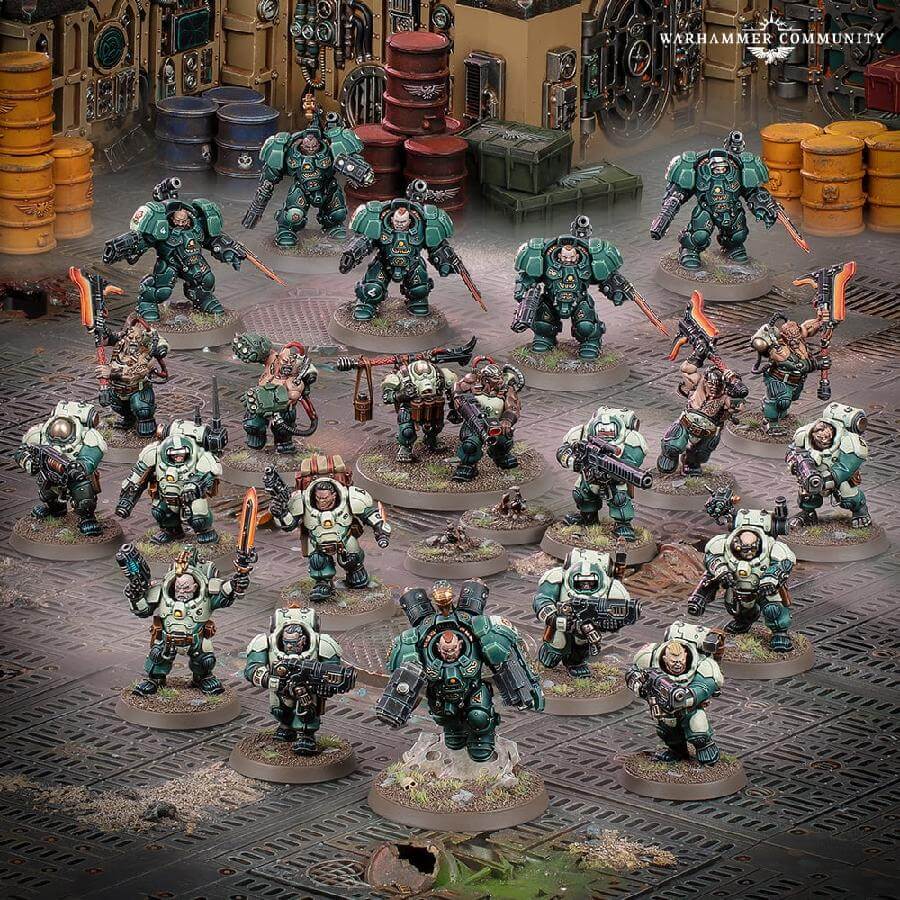
(See 1998 entry for the initial Squat removal. This is basically a reversal of a previous retcon. Can we call it a re-retcon? 😀 )
What Changed: Squats reimagined and reintroduced as an active faction.
After being absent for decades, the Squat descendants made a comeback in the form of the Leagues of Votann in late 2022. GW launched a full model range and codex for the Leagues, effectively retconning the earlier “extinction”. The new lore explains that these “Kin” (Squat descendants) survived in isolated galactic core leagues with advanced ancestor cores (the Votann).
They had always been around to some degree, but operating separately from the Imperium. Notably, new fluff even mentions that the Leagues of Votann had tech trade contacts with the Imperium and others — for example, a retcon that they taught the Tau the secret of railgun technology, implying their influence was woven into existing lore events. This was a significant change from “wiped out by Tyranids” to “prosperous and have been here all along.”
Contradiction: Directly reverses the late-90s lore that Squats were dead.
The last official word on Squats (outside cameo mentions) was that their worlds were devoured by Hive Fleet Kraken (or a tendril thereof). The new lore not only contradicts their extinction but suggests a continuous presence (just unrecognized by outsiders).
It’s basically a full narrative 180: from none left to an entire civilization thriving in the galactic core. Additionally, older materials classified Squats as abhumans closely tied to the Imperium, whereas Leagues of Votann are a separate polity (though still descendants of humans).
However, GW neatly sidestepped some contradiction by positioning the Votann leagues in remote regions – implying the Imperium thought the Squats were gone, when in reality only the homeworld league fell and others survived.
Minor earlier references (like the Demiurg in Battlefleet Gothic) were retroactively about these surviving Kin, which actually helped smooth the retcon since those references can be seen as “evidence” the Squats weren’t entirely gone.
Community Reaction: Elation with mild debate.
The reaction to the Squats’ return was overwhelmingly positive and excited. Long-time fans who never thought they’d see Squats again were thrilled – this was a redemption of one of GW’s most notorious retcons.
Memes about “the Squats aren’t dead!” proliferated. There was some debate about the new direction: The Leagues of Votann are more high-tech and enlightened than the old biker Squats, which a few grognards found too far a departure (“my space dwarfs used to ride trikes and drink ales, now they have AI cores and gravity guns”).
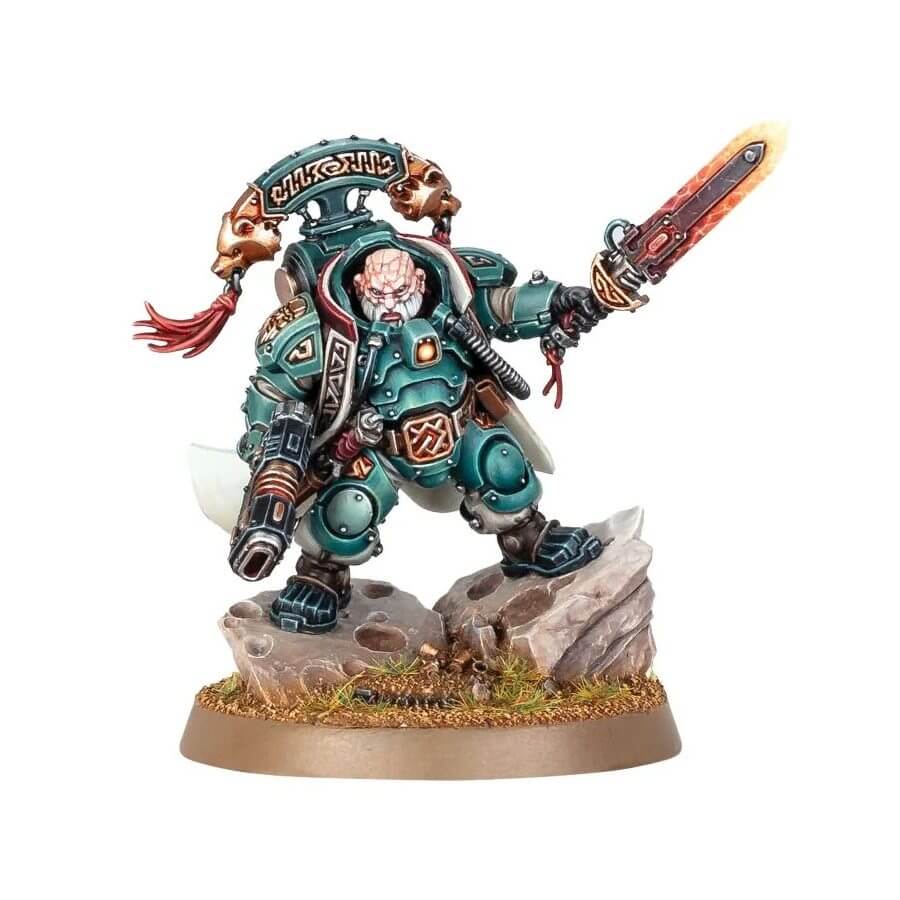
But most saw the new lore as an improvement that gave the faction a unique identity in 40K’s modern context. Any controversy was minor compared to the excitement; even those who don’t plan to collect the army felt it was a “win” for the lore to undo what many viewed as an unjust removal.
There was also discussion acknowledging the cleverness of how GW handled it – treating the prior extermination as partially true (one branch fell) but not the whole story.
Long-Term Impact: The Squats are canon again, retcon largely embraced.
The Leagues of Votann have firmly taken root in the lore, with their codex and ongoing stories. This retcon’s impact is the restoration of a faction once thought gone, showing that GW can and will reverse older retcons if there is both fan demand and a creative vision for it.
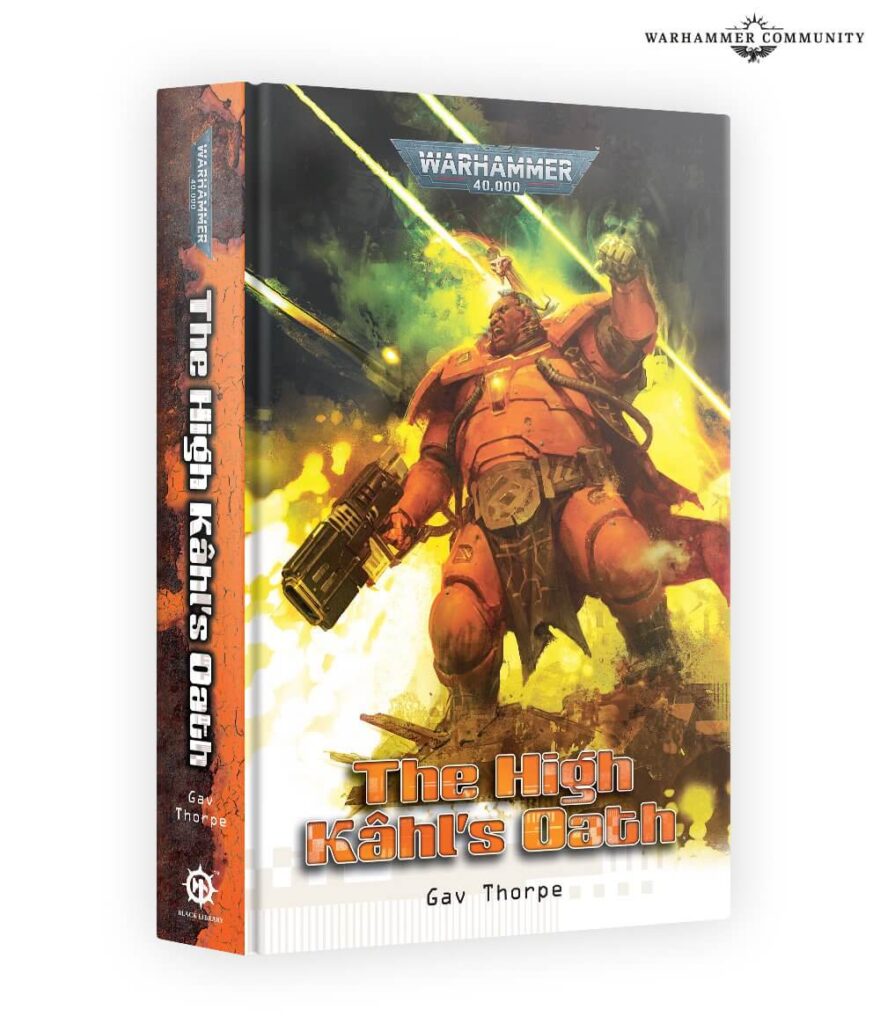
It also underscores a pattern: the 1998 Squat removal (controversial) was only truly resolved in 2022, illustrating that some controversies can persist until the developer finds a satisfying way to address them.
The community now regards the old “eaten by Tyranids” story as a half-truth in lore – a footnote in the Squats’ history – and celebrates the fact that what was once a punchline is now an active part of 40K’s rich tapestry again.
2024 – “There Have Always Been Female Custodians”
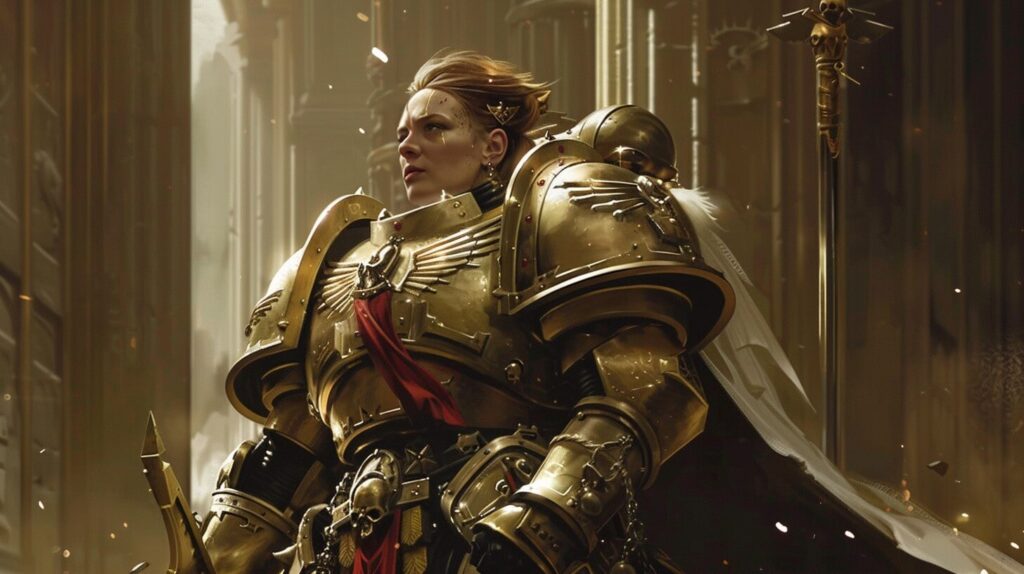
What Changed: Female Adeptus Custodes confirmed in lore.
In early 2024, the 10th Edition Codex: Adeptus Custodes included a short story (on page 14) introducing a female Custodian Guard, and Games Workshop officially stated via Twitter that “since the first of the Ten Thousand were created, there have always been female Custodians.”
This was a notable retcon (or clarification, as GW framed it) because previously, all Custodians – the Emperor’s 10,000 genetically-crafted guardians – were implicitly male. The new lore makes clear that Custodians, unlike Space Marines, are not gender-restricted in their creation.
This came alongside and in support of the codex release, catching many fans by surprise since it altered a long-held assumption about the Emperor’s Guard.
Contradiction: Prior lore and assumptions depicted Custodians as all-male.
While it was never explicitly stated that Custodians couldn’t be female, every single depiction in rulebooks, art, and novels for 30+ years showed male Custodians (all known named Custodians were male, and their gene-crafting was often analogized to the Astartes, who are male-only). The Custodians are created from the Emperor’s genetic stock (though not via primarch gene-seed like Marines), and fans logically assumed the same male-only limitation applied.
Some older texts even referred to them with male pronouns uniformly. Thus, confirming female Custodians retroactively feels like a retcon of portrayal, if not literal text. It notably stands in contrast to Space Marines, where the lore explicitly states they are male-only; Custodes never had that line, and GW leaned on that technicality to introduce this change.
Nevertheless, in the eyes of many fans, this contradicted the spirit of earlier lore, if not the letter.
Community Reaction: Controversy, largely around “gender in 40K” debates.
Predictably, this sparked intense online debate (far more than GW likely expected for a one-paragraph lore snippet). A portion of the community praised the move for inclusivity and for distinguishing Custodians from Marines in a new way.
It was pointed out that it doesn’t break anything in the story – Custodians are few and mysterious, and always armored and helmeted, so having some women has no impact on existing characters (it was more like an “oh, okay” revelation). However, another segment of the community accused GW of bending to “political correctness” or doing a retcon “no one asked for,” leading to heated arguments on forums and social media.
Some felt it was shoehorned and disingenuous (since for years GW itself acted as if Custodians were all male). Others responded to the backlash by highlighting that this is a minor change that doesn’t affect the narrative, labeling opponents of the idea as bigots.
The topic became a flashpoint in the ongoing discourse about female representation in 40K (closely tied to the perennial “female Space Marine” controversy). Overall, the reaction was mixed, with lots of discourse but also many who were indifferent, seeing it as a small detail.

Long-Term Impact: Canon adjusted with minimal practical change.
Now that it’s official, future Custodes lore can freely include notable women in the Ten Thousand (though it remains to be seen if many named Custodian characters will be female, or if this stays as background flavor).
The retcon did not require any reversal of past storylines; it was more a reinterpretation of the Custodes’ ranks. It demonstrates GW’s current approach to diversity in lore – carefully adding representation in ways that avoid invalidating existing characters.
The furor around it has largely subsided, especially as the actual game/models weren’t directly affected (Custodes models are armored and androgynous). This retcon is likely to be accepted as a normal part of Custode’s lore moving forward, and indeed many fans have already moved on, seeing it as GW correcting an oversight.
Importantly, GW took pains to clarify this does not open the door to female Space Marines (which would require a much bigger retcon due to explicit prior lore).
In summary, the female Custodian reveal was a lore course-correction that caused a stir but ultimately left the universe intact – aside from allowing more inclusivity.
It highlights how even a small change in lore presentation can spark debate, but if handled within the existing framework (in this case, no prior canon outright forbade it), GW is willing to make such changes.
2025 – The Wraithbone Controversy (Eldar Material Science Retcon)
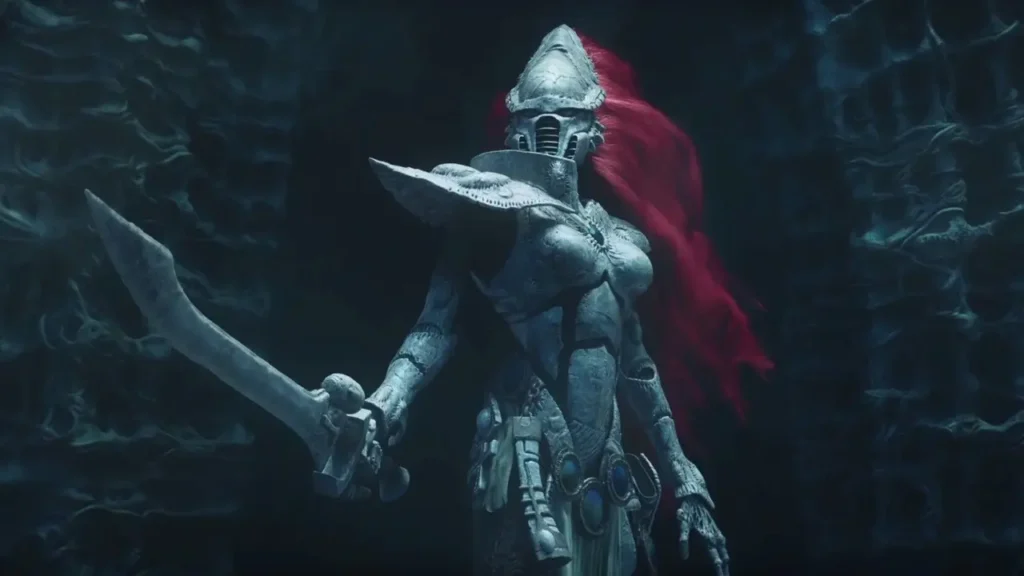
What Changed: Eldar wraithbone described as a physical composite, not pure psychic matter.
The 10th Edition Codex: Aeldari (2025) introduced a brief but shocking tweak to how Wraithbone – the psycho-reactive material that craftworld Eldar build their structures and weapons from – is explained.
A passage in the codex states: “The wraithbone substance from which each craftworld is wrought is a composite material formed from various compounds, ores and minerals; it is as much grown as it is forged.”.
This wording implies that wraithbone is not conjured out of nothing by psychic power, but rather requires physical components (minerals and ores) and a process akin to cultivation or forging. It’s “grown” (as in the old lore) but also “forged” from ingredients.
This seemingly small lore detail marked a significant shift from the long-established depiction of wraithbone.
Contradiction: Established Eldar lore said wraithbone is psychically generated from the Warp.
In every prior source for decades – from 2nd Edition Codex: Eldar to Black Library novels – wraithbone was described as solidified warp energy, brought forth by Bonesinger psychics. For example, Codex: Eldar (2nd ed., 1994) flatly states that “Wraithbone is essentially solidified warp energy that is manipulated by a Bonesinger into any shape required.”
Novels like Valedor (2014) vividly showed Bonesingers creating matter from nothing, spinning wraithbone out of light and the raw immaterium. The Eldar, as a result, had a post-scarcity society: they didn’t need to mine or gather resources; they used psychic power to craft everything.
The new codex line directly contradicts this by implying wraithbone is at least partly made of realspace materials and that it’s not just “magicked” out of thin air. If wraithbone now requires ores, that undermines a key differentiation of the Craftworld Eldar – their self-sufficiency via the Warp.
Fans immediately pointed out that this retcon “spits on 30 years of established canon”, turning wraithbone from a quasi-mystical substance into “just a bunch of rocks” combined with psychic singing. In essence, a fundamental aspect of Eldar technology and culture was altered.
Community Reaction: Strong backlash from Eldar lore fans.
This change sparked major debate and outrage in the Warhammer community, especially among longtime Eldar players. Within hours of the codex release, online forums and social media lit up with complaints and confusion. Fans exclaimed that the Eldar had been “gutted as a faction” because this detail seemingly cheapens their uniqueness.
Many argued this retcon was entirely unnecessary and showed a misunderstanding by GW’s current writers of why wraithbone was important. On the Warhammer Lore subreddit, a post titled “The Wraithbone Change a.k.a. Gutting a Faction’s Lore” garnered significant attention, with the codex excerpt and references to older lore (like Valedor) laid out side by side.
Some tried to defend or rationalize the change – suggesting maybe it was meant to say that once wraithbone is created psychically, it incorporates physical matter, or that perhaps it was misinterpreted.
Others noted it might be an attempt to explain how huge craftworlds can be built (perhaps requiring some material scaffolding). But the dominant sentiment was negative, seeing it as a “hard retcon” that was hard to justify.
Comments ranged from disappointment (“Why fix what wasn’t broken?”) to resignation (“Classic GW inconsistency.”).
Long-Term Impact: Pending – possible clarification or reversal?
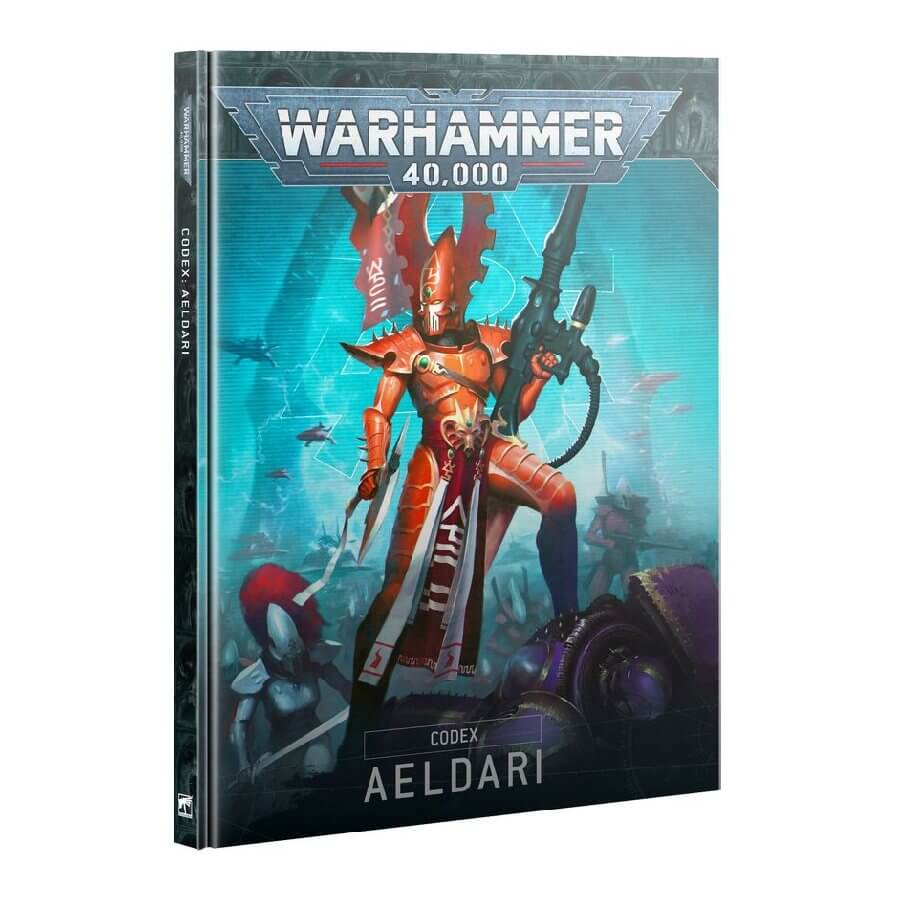
As of March 2025, this retcon is very fresh. The immediate impact has been a dent in Eldar fans’ trust in GW’s lore consistency. Some are holding out hope that Black Library novels or future sourcebooks will clarify or soft-retcon this change, perhaps by stating that while ores are used, the core of wraithbone is still warp matter (essentially finding a compromise).
It’s also possible GW might ignore the controversy and continue with this new interpretation. If the latter, it means Eldar society might be portrayed going forward as less wholly reliant on psychic crafting and possibly in need of resources (which would be a dramatic shift, with implications for their narrative – e.g., might they need to raid or trade for minerals?).
The pattern in GW’s approach is that fan backlash sometimes leads to adjustments (for example, if an outright mistake was made), but not always to full reversals. Observers have noted that this could be a case of an author’s slip-up that made it through editing. The long-term acceptance of this retcon will depend on how much GW leans into it.
If they double down, it risks remaining a point of contention akin to the Necron change in 2011 (though on a smaller scale); if they quietly drop or counteract it in future text, it might be remembered as a blip. Right now, it remains highly controversial, and it’s a clear example of how even a small lore paragraph can ignite major debate.
Eldar players are watching closely to see if this gets addressed. Until then, the wraithbone controversy of 2025 stands as a caution that even decades-old fundamental lore can change overnight – and that the community will definitely voice its opinions about it.
Patterns in Games Workshop’s Lore Retcons
Looking over the decades of Warhammer 40K lore changes, some clear patterns emerge in GW’s approach to retcons:
Early Broad-Strokes Retcons:
In the late ’80s and early ’90s, many “retcons” were actually additions that supplanted vaguer old lore. (For example, the Horus Heresy wasn’t so much contradicting old lore as filling in a gap, and the tightening of Imperial xenophobia was a tonal shift as the setting found its identity.)
These tended to be accepted more easily, as the setting was young and fans expected it to evolve. However, this era also saw certain elements (like the Sensei or half-Eldar characters) quietly removed as the tone was standardized, showing GW’s early willingness to drop ideas that didn’t fit the emerging grimdark narrative.
Removal and Reintroduction of Factions:
The case of the Squats is instructive – GW unflinchingly removed a faction when they felt it wasn’t working, despite fan attachment. It took more than two decades and a complete reimagining to bring that faction back.
This pattern demonstrates that GW might axe lore in the short term, but they often leave a door open (Jervis Johnson explicitly noted they kept the concept in their “back pocket”). When reintroduced, as with the Leagues of Votann, it’s presented as a return of something that was “always there,” effectively a retcon that nullifies the previous retcon of removal.
The community’s generally positive reaction to the Squat revival suggests that reversing a controversial retcon can earn good will, provided it’s done thoughtfully.
Codex-Driven Revisions:
Several major retcons coincide with new edition codices or model releases – the Necron overhaul in 2011, the Primaris introduction in 2017, the Custodes and Eldar changes in 2024–25. In each case, the lore was adjusted to facilitate new army concepts or to refresh a faction’s narrative.
These tend to be more controversial because they can rewrite beloved backgrounds. Fans are keenly aware when a lore change serves a commercial purpose (e.g., justifying new units). Yet, over time, if the new lore proves rich (as with Necrons) or the new units become part of the landscape (Primaris), the initial backlash subsides.
GW seems willing to weather short-term criticism for what they see as long-term improvement or expansion of the IP.
Black Library Influence and Dual Lore Sources:
The Horus Heresy novels, The Beast Arises series, and others have introduced retcons (Alpha Legion’s twist, Deathwatch origins, etc.) that later bled into the “main” lore.
This shows an increasing synergy – or sometimes tension – between Black Library authors’ ideas and the core studio canon. It allows bold storytelling (novels often delve into unexplored corners and can reconceptualize things), but it also can lead to multiple versions of lore until one is settled as primary (as seen with the two Deathwatch origin stories coexisting in lore references).
Fans have become savvy in navigating “BL says this, codex says that,” but it can spark debate when they conflict. GW’s approach seems to be that a good story in a novel can justify changing the codex lore later, effectively treating lore as somewhat fluid.
Retconning by Addition (“It was here all along”):
A common tactic GW uses (called out even tongue-in-cheek in community discussions) is adding new elements under the premise that they always existed unseen. From hidden successor chapters, to “there were female Custodians all along,” to entire branches of technology (Primaris, new Custodes gear) being quietly in use for centuries, this type of retcon tries to minimize contradiction by asserting previous omission.
The community often views these with skepticism, but they are less jarring than outright “X didn’t happen” changes. Overuse of this can strain credibility (the joke “we just never saw it for 10,000 years” comes up), yet it remains one of GW’s go-to methods for lore updates.
Fan Backlash and GW’s Response:
Fan reaction has varied from quiet acceptance to loud outrage, and GW’s responses have likewise varied. Generally, GW does not publicly address fan complaints about lore; they simply forge ahead. However, there are subtle signs they sometimes adjust course. For instance, the quick correction in the timeline (rolling back 8th Ed’s time-skip) might have been to address confusion and dissatisfaction.
The future will tell if the wraithbone outcry leads to a clarification. In the age of the internet, GW is certainly aware of community sentiment, but they balance that against their creative and commercial goals. The pattern suggests GW is willing to retcon lore despite controversy, but truly sustained fan outrage is relatively rare – most retcons, even hotly debated ones, become accepted after an edition or two. And if a retcon really falls flat (or the story potential of the old lore returns), GW might even reverse it years later.
In conclusion, Warhammer 40K’s lore has never been static – it’s a patchwork built over decades, with retcons serving as the stitching. From the grand narrative of the Horus Heresy to the minute detail of wraithbone’s composition, each change has met with its share of debate.
Yet, these retcons often refresh the tapestry of the 41st Millennium, showing that 40K’s lore, much like the galaxy it depicts, is in constant flux – shaped by both design decisions and the passionate reactions of its community.
The timeline above captures the most contentious of these changes, each a chapter in the ongoing dialogue between Games Workshop’s creative vision and the fans who inhabit the Grimdark universe through imagination.
FAQs
Why does Games Workshop change established lore?
Games Workshop has a history of evolving Warhammer 40K lore to align with new rules, model releases, and narrative shifts. Some changes aim to improve storytelling or fix inconsistencies, while others are perceived as unnecessary or controversial.
Which Warhammer 40K retcon was the most controversial?
Many retcons have sparked backlash, but the removal of wraithbone as a purely psychic material, the introduction of female Custodes (“Femstodes”), and the shifting history of the Horus Heresy rank among the most debated. Fans often resist changes that alter fundamental aspects of long-established factions.
Do Warhammer 40K retcons affect gameplay or just lore?
Most retcons impact lore and world-building, but some directly affect gameplay. Changes to Chaos Space Marines’ history, Primaris Space Marines’ origins, and the Necron Dynasties’ background have influenced army compositions and tabletop rules.
Has Games Workshop ever reversed a retcon?
While rare, GW has occasionally softened or ignored retcons in response to fan backlash. For example, the lore surrounding the Imperial Fists’ lost successors was altered multiple times, and certain inconsistencies in Primaris Marine origins were later clarified or walked back.
Where can I track future Warhammer 40K lore changes?
The best sources for updates are official codices, Black Library novels, White Dwarf magazine, and community discussions on platforms like Warhammer Community, Reddit, and lore forums. Keeping up with each edition’s rulebooks and campaign books also helps.

